Top 11 Most Profitable Trees to Grow in India
Published on July 23, 2025
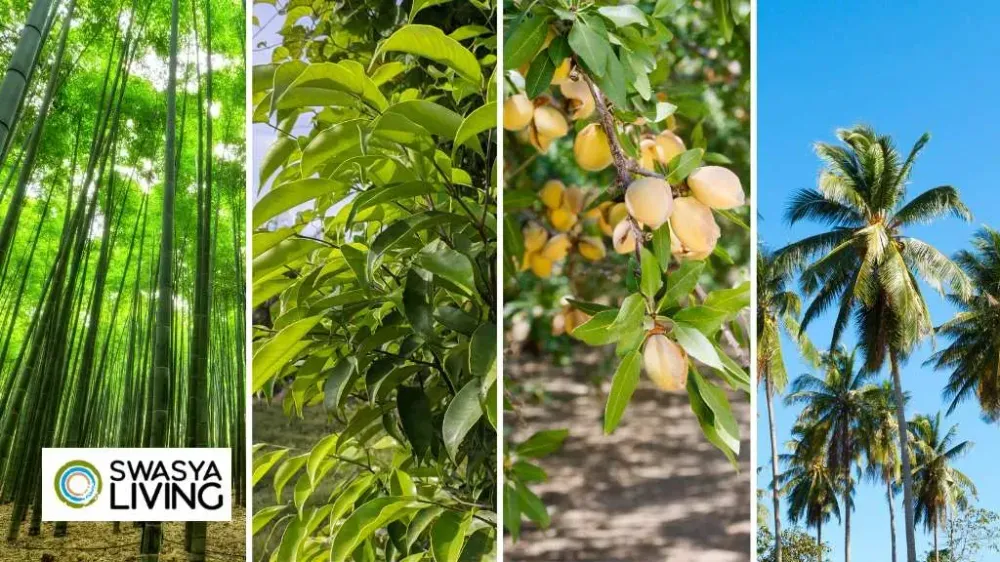
When it comes to choosing the most profitable trees to grow in India, selecting the right species can make a significant difference in your agricultural success.
This comprehensive guide explores the top 10 most profitable trees, providing valuable insights into their benefits, growth conditions, and economic potential.
Whether you're looking for the best fruit trees or wood trees, these options offer promising returns and can thrive in various climates across India.
11 Most Profitable Trees to Grow in India
1. Mango Trees (Mangifera indica) - Most Profitable Fruit Trees to Grow in India
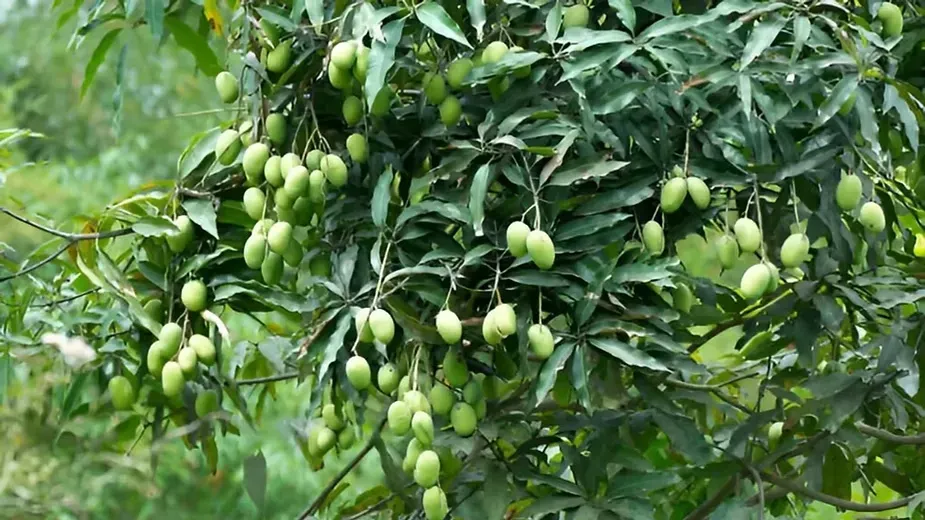
Mango trees are among the most profitable fruit trees to grow in India, renowned for producing some of the world's most cherished and valuable fruits. With their rich flavor and sweet aroma, mangoes flourish in India's warm, tropical climate. Highly sought after both domestically and internationally, mangoes are an excellent choice for maximizing agricultural returns.
Key Benefits:
- High Market Demand: Mangoes are a global favourite, with premium varieties like Alphonso and Kesar commanding top dollar. These sought-after fruits are in high demand for their unique flavour and quality, ensuring a lucrative market for growers.
- Long Harvesting Period: Once established, mango trees have a long productive lifespan. They continue to bear fruit for many years, providing a consistent and reliable source of income.
- Culinary Versatility: Mangoes are incredibly versatile. Beyond being enjoyed fresh, they can be transformed into a variety of products such as juices, jams, and preserves, adding multiple revenue streams to your farm.
Considerations:
- Climate Requirements: Mango trees thrive in a tropical climate with plenty of sunlight and well-drained soil. They need warm temperatures and protection from frost to flourish.
- Pest Management: Regular pest control is crucial. Mango trees can be susceptible to pests like mango weevils, which can affect fruit quality. Keeping an eye on your trees and managing pests proactively will help maintain healthy fruit production.
2. Teak Trees (Tectona grandis) - Most Profitable Wood Trees to Grow in India

Teak trees are among the most profitable wood trees in India, celebrated for their exceptional durability and striking appearance. Known for its rich, golden-brown hue and fine grain, teak wood is a top choice for high-quality furniture and construction projects. If you're interested in wood production, teak offers a rewarding option with its impressive value and versatile applications.
Key Benefits:
- High Value: Teak wood is highly sought after for its strength and beauty, making it a premium material for crafting furniture and building structures. Its aesthetic appeal and durability contribute to its high market value.
- Long-Term Investment: Although teak trees take several years to mature, their long-term benefits outweigh the wait. The value of mature teak wood can be substantial, making it a profitable investment over time.
- Durable Wood: Teak wood is renowned for its resistance to pests and harsh weather conditions. This natural durability ensures that teak products are long-lasting and maintain their quality over time.
Considerations:
Slow Growth: Teak trees have a lengthy growth period before they reach maturity and can be harvested. Patience is required as the trees take several years to develop the high-quality wood that is so highly valued.
Space Needs: Teak trees need plenty of space to grow effectively. They thrive in an open environment where they have room to spread their branches and develop properly.
3. Sandalwood Trees - Most Profitable Wood Trees to Grow in India
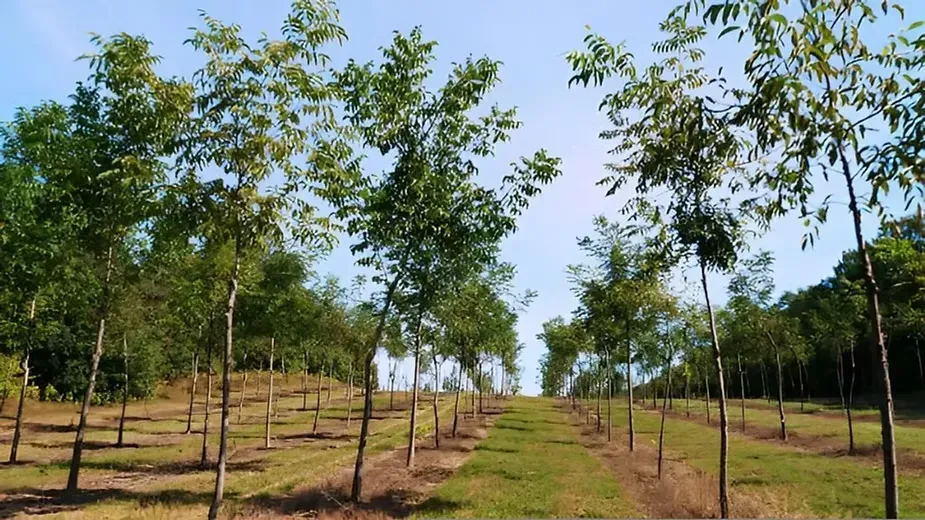
Sandalwood is one of the most profitable wood trees to grow in India. Its aromatic wood and oil are in high demand for perfumes and religious purposes. Although it requires legal permissions to cultivate, the returns are worth the effort.
Read on: How to grow Sandalwood farming in India
4. Guava Trees (Psidium guajava) - Most Profitable Fruit Trees to Grow in India
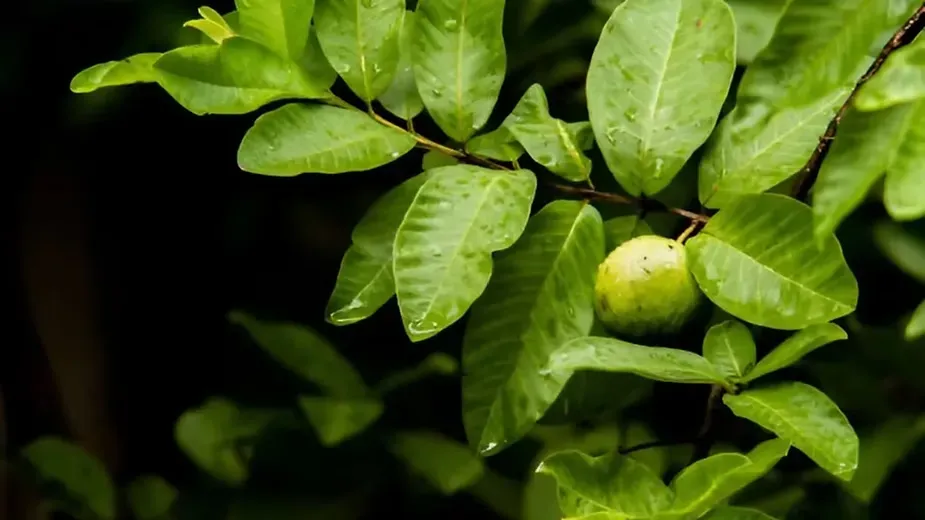
Guava trees are one of the most profitable fruit trees to grow in India, offering nutrient-rich fruits with minimal effort. Praised for their sweet flavor and health benefits, guavas are a favorite among fruit enthusiasts. Their adaptability to diverse climatic conditions makes them a versatile and profitable option for growers across the country.
Key Benefits:
- Rapid Fruit Bearing: One of the standout features of guava trees is their ability to produce fruit quickly. Unlike many other fruit trees, guavas can start yielding fruit within just a year or two of planting. This means quicker returns on your investment and the joy of harvesting delicious guavas sooner.
- Nutritional Value: Guavas are a powerhouse of nutrition. They are packed with vitamins, especially vitamin C, and antioxidants, making them a healthy addition to any diet. The high nutritional content also boosts their market value, as health-conscious consumers are always on the lookout for nutritious fruit options.
- Low Maintenance: Guava trees are known for their low maintenance requirements. They are hardy and can thrive in a variety of soil types, from sandy to clayey. This adaptability reduces the need for intensive care and makes guava cultivation accessible even for novice farmers.
Considerations:
- Pest Management: While guava trees are generally robust, they do require regular monitoring for pests such as fruit flies. Implementing an integrated pest management system can help keep these issues in check and ensure healthy fruit production.
- Pruning: Proper pruning is essential for maintaining the health of guava trees and maximizing fruit yield. Regularly trimming the branches helps to improve air circulation, reduce disease risk, and encourage the growth of larger, sweeter fruits.
5. Neem Trees (Azadirachta indica)
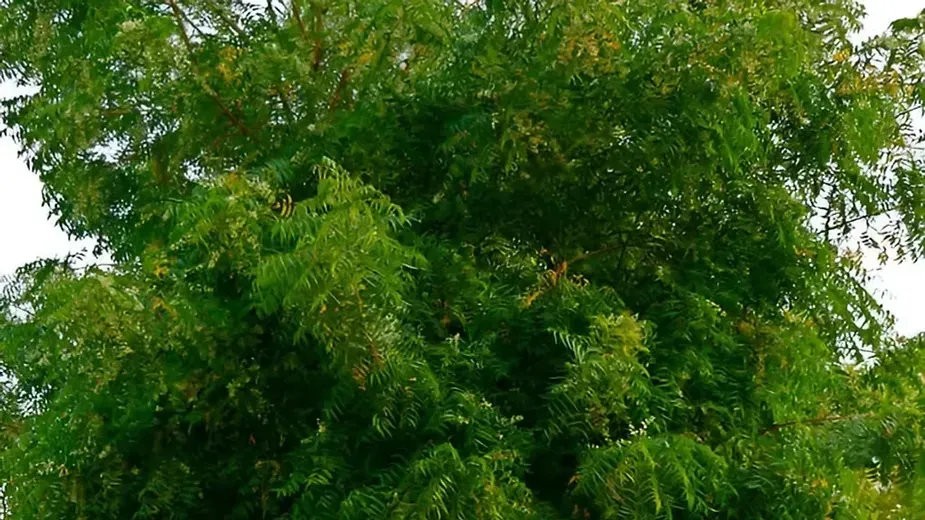
Neem trees are among the most profitable trees to grow in India, valued for their numerous medicinal properties and versatility. They are integral to traditional medicine, agriculture, and natural pest control, making them a highly beneficial and lucrative choice for various applications.
Key Benefits:
- Medicinal Uses: Neem leaves and oil are famous for their healing properties. They are widely used in skincare products for their ability to treat acne and other skin conditions. Neem oil is also used in dental care products to promote oral health.
- Environmental Benefits: Neem trees contribute to improving soil quality, making them an excellent addition to any agricultural setting. Additionally, their natural pest-controlling properties help reduce the need for chemical pesticides, promoting a healthier environment.
- Hardy Tree: Neem trees are incredibly hardy and can thrive in arid and drought-prone areas. This resilience makes them suitable for regions with challenging growing conditions.
Considerations:
- Slow Growth: One of the main drawbacks of neem trees is their slow growth rate. They take several years to reach maturity, so patience is essential when planting neem trees.
- Space Requirements: Neem trees can grow quite large, with an extensive canopy. This means they need ample space to grow properly, making them less suitable for small gardens or confined areas.
6. Cashew Trees (Anacardium occidentale)
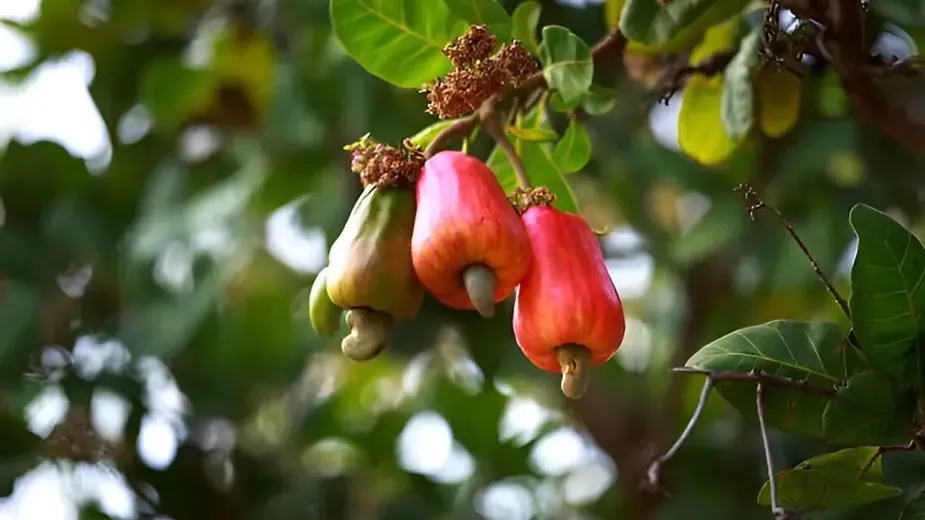
Cashew trees are among the most profitable fruit trees to grow in India, offering a highly versatile and lucrative crop. Known for producing both cashew nuts and cashew apples, these trees provide multiple revenue streams and high economic returns.
Key Benefits:
- High Market Value: Cashew nuts are highly sought after in global markets, fetching premium prices due to their rich taste and nutritional benefits. This high market value makes cashew trees a lucrative investment.
- Nutritional Value: Cashews are packed with essential nutrients, including protein, vitamins, and minerals. They are a popular healthy snack option, appreciated for their creamy texture and delicious flavor.
- Economic Returns: The versatility of cashew trees extends beyond the nuts. Cashew apples, which grow alongside the nuts, can be used to make beverages, jams, and preserves. This dual yield provides additional revenue streams for farmers.
Considerations:
- Climate Requirements: Cashew trees thrive in tropical climates and require well-drained soil to grow effectively. They are best suited for regions with a consistent warm climate.
- Pest Management: Cashew trees are susceptible to pests and diseases, which can affect both the nuts and the apples. Regular pest control measures are necessary to protect the crop and ensure healthy yields.
7. Coffee Plants (Coffea arabica)
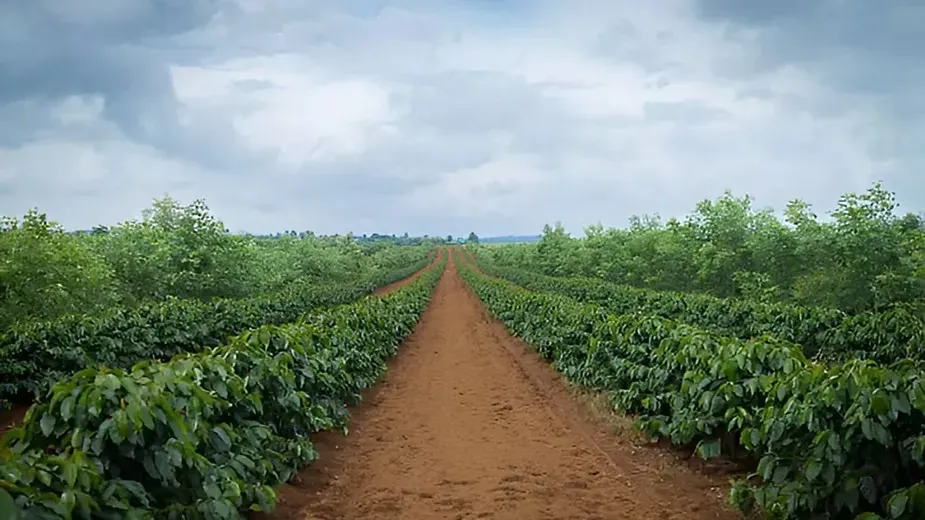
Coffee plants are among the most profitable trees to grow in India, particularly in higher-altitude regions. With strong global demand for coffee beans, this crop represents a valuable agricultural venture. For those exploring coffee plantations, Swasya Living Coffee Estates in Sakleshpur offers a prime example of how specialized farming techniques can optimize coffee growth. Their expertise in sustainable practices, from soil management to pest control, demonstrates how leveraging similar resources can boost your coffee plantation's success and yield.
Read Next: How to grow coffee plants
Key Benefits:
- High Value: Coffee is considered a high-value crop due to its widespread popularity and the significant market it commands both domestically and internationally. The premium price that quality coffee beans fetch makes coffee cultivation a lucrative enterprise.
- Export Potential: India is recognized globally for producing high-quality coffee beans. This reputation opens up substantial export opportunities, allowing farmers to tap into international markets and gain higher profits.
- Sustainable Farming: Coffee cultivation is conducive to sustainable agricultural practices. Coffee plants can be grown alongside other crops, which helps promote biodiversity and improves overall farm health. This intercropping system also aids in efficient land use and pest management.
Considerations:
- Climate Suitability: Coffee plants require a cool, high-altitude environment to thrive. Regions with moderate temperatures, adequate rainfall, and well-drained soil are ideal for coffee cultivation. Ensuring the right climate conditions is crucial for healthy plant growth and high-quality bean production.
- Maintenance: Growing coffee plants demands regular care and attention. Proper pruning, fertilization, and pest management are essential to maintain plant health and achieve optimal yields. Farmers need to be vigilant about monitoring for common pests and diseases that can affect coffee plants.
8. Coconut Trees (Cocos nucifera) - Most Profitable Fruit Trees to Grow in India
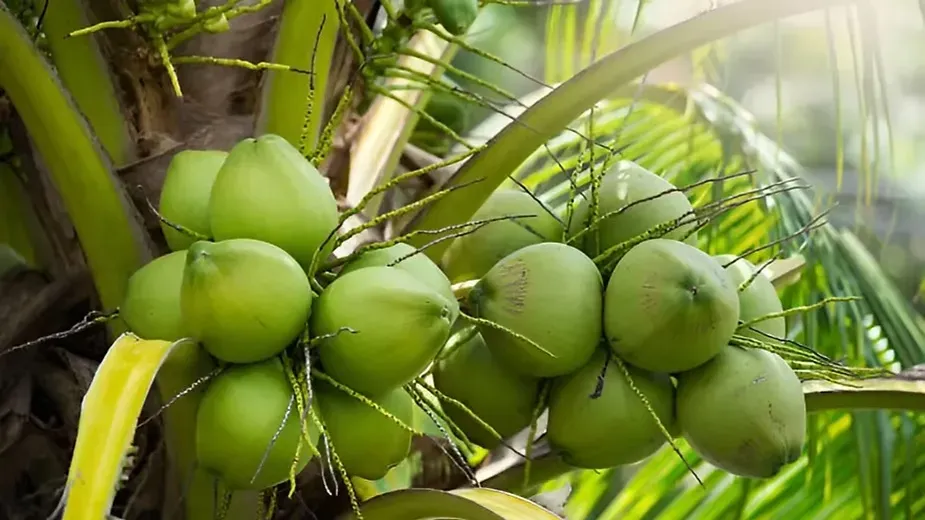
Coconut trees are an incredibly versatile crop, offering a wide array of products that cater to various markets. As one of the most profitable wood trees to grow in India, they are particularly well-suited to the coastal regions where the climate and soil conditions are ideal for their growth.
Key Benefits:
- Multiple Uses: Coconut trees are known for their multiple uses, making them a highly valuable crop. The water from coconuts is a refreshing drink rich in electrolytes, the flesh can be eaten fresh or dried, and the husk is used in products like coir and ropes. Additionally, coconut oil, extracted from the flesh, is widely used in cooking, cosmetics, and as a health supplement.
- Stable Market: There is a consistent and strong demand for coconut products both domestically and internationally. This stability ensures a reliable market for farmers, providing a steady income. Coconut oil, in particular, has a significant market due to its versatility and health benefits.
- Low Maintenance: Once established, coconut trees are relatively low maintenance. They require minimal care compared to other crops, making them an attractive option for farmers. Regular watering and occasional fertilization are generally sufficient to keep the trees healthy and productive.
Considerations:
- Space: Coconut trees need ample space to grow and spread their roots effectively. They are best suited for large plots of land, particularly in coastal and tropical areas where they can thrive without competition for resources.
- Time to Maturity: One of the main considerations for growing coconut trees is their time to maturity. It takes several years for coconut trees to start bearing fruit, typically around 6-10 years. This means that farmers need to be patient and plan for the long term when investing in coconut cultivation.
9. Jackfruit Trees (Artocarpus heterophyllus)
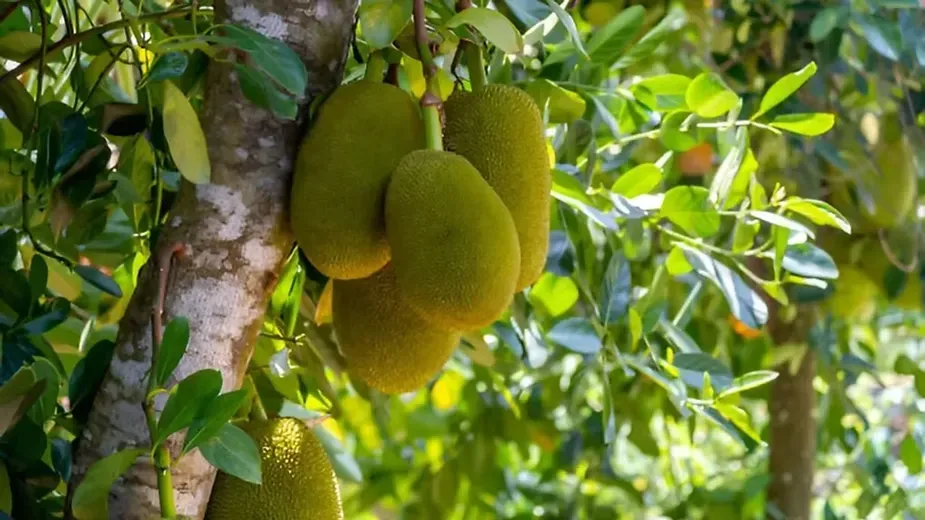
Jackfruit trees are renowned for their large, sweet fruits that offer high yield and versatility. As one of the most profitable trees to grow in India, they provide an excellent opportunity for farmers aiming to boost their agricultural output and profitability.
Key Benefits:
- High Yield: One of the standout features of jackfruit trees is their high yield. A single tree can produce a substantial amount of fruit each year. The fruits themselves are large, often weighing between 10-25 kilograms, and can be harvested multiple times during the growing season. This abundance makes jackfruit a highly profitable crop for farmers.
- Nutritional Value: Jackfruits are packed with essential vitamins and minerals, including vitamin C, potassium, and dietary fibre. They are also a good source of antioxidants. This nutritional richness makes jackfruit a healthy choice for consumers and adds to its market appeal.
- Versatility: Jackfruit is exceptionally versatile and can be used in a variety of culinary dishes. The ripe fruit has a sweet, tropical flavour and can be eaten fresh, dried, or used in desserts. Unripe jackfruit, often referred to as "vegetable meat," has a texture similar to pulled pork and is popular in savoury dishes, making it a favourite among vegetarians and vegans.
Considerations:
- Space Requirements: Jackfruit trees are large and require ample space to grow properly. They can reach heights of up to 20 meters and have a wide canopy. This means they are best suited for larger plots of land where they can spread out without competing for resources with other plants.
- Pest Management: Regular monitoring for pests and diseases is essential to maintain the health and productivity of jackfruit trees. Common issues include fruit flies, aphids, and fungal infections. Implementing integrated pest management practices, such as regular inspections and the use of organic pesticides, can help keep these problems in check.
10. Pomegranate Trees (Punica granatum) - Most Profitable Fruit Trees to Grow in India
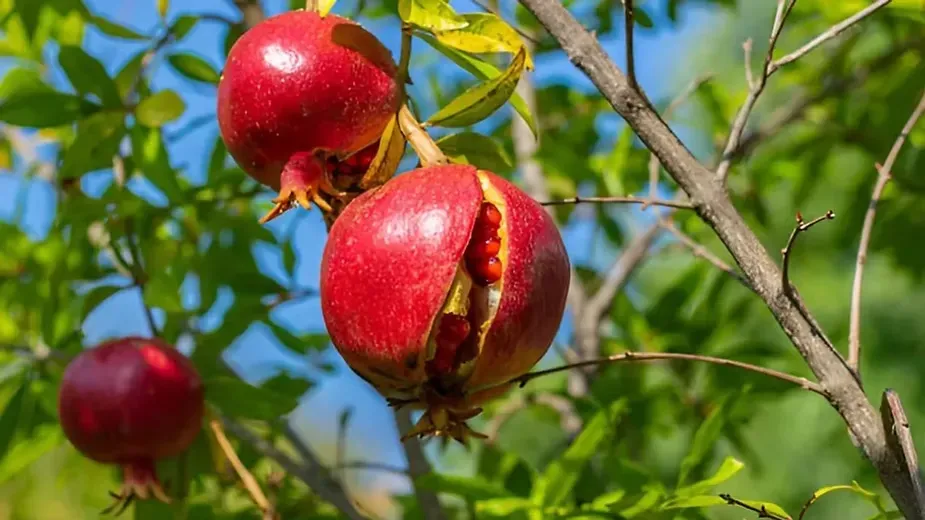
Pomegranate trees are cherished for their juicy, antioxidant-rich seeds and are among the most profitable fruit trees to grow in India. They thrive in arid and semi-arid regions, making them a valuable crop for farmers aiming to capitalize on their health benefits and strong market demand.
Key Benefits:
- Health Benefits: Pomegranates are rich in antioxidants, vitamins, and minerals, which improve heart health, reduce inflammation, and boost immunity. Their high antioxidant content helps combat oxidative stress.
- Long Shelf Life: Pomegranates have a long shelf life, allowing for extended storage without significant quality loss. This benefits both farmers and retailers by reducing waste and ensuring market availability.
- Economic Value: Pomegranates are a high-value crop with strong market demand. They can be sold fresh, as juice, or processed into various products, providing multiple revenue streams.
Considerations:
- Climate Requirements: Pomegranate trees thrive in dry, well-drained soil and are suited to arid and semi-arid climates. They are drought-tolerant and can endure high temperatures, but require well-drained soil to prevent root rot.
- Pest Management: Regular pest control is necessary to protect the trees and fruit. Common pests include aphids, whiteflies, and fruit borers. Integrated pest management practices, such as inspections and organic pesticides, help maintain tree health and fruit quality.
11. Bamboo (Various species) - Most Profitable Wood Trees to Grow in India
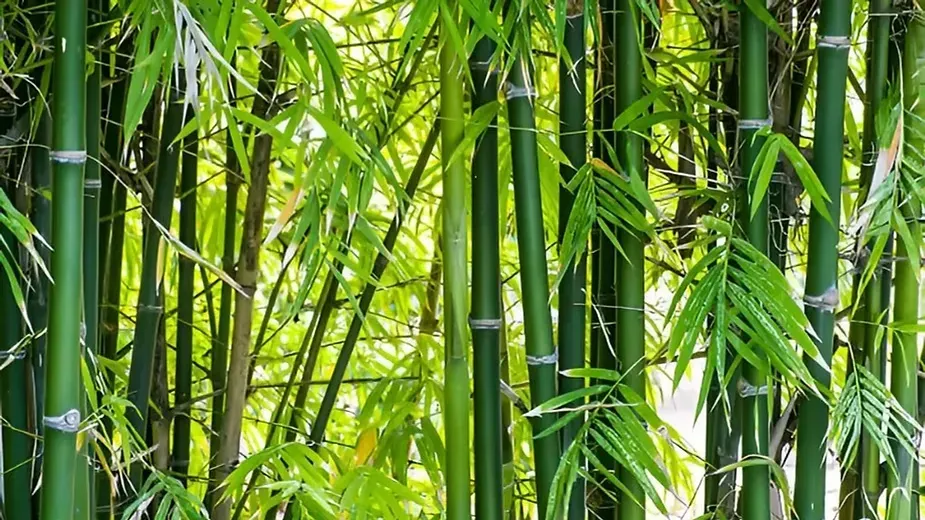
Bamboo is a highly versatile plant and one of the most profitable wood trees to grow in India. Its rapid growth and diverse applications make it a top choice for sustainable practices, including use in construction, furniture, and various other products.
Key Benefits:
- Rapid Growth: amboo is one of the fastest-growing plants, reaching full maturity and harvestable size within a few years. Its rapid growth makes it a valuable resource for both immediate and extended projects.
- Versatility: Bamboo's flexibility and strength make it ideal for a wide range of products, from sturdy furniture to eco-friendly paper. Its adaptability also allows it to be used in various construction applications, including flooring and scaffolding.
- Environmental Benefits: Bamboo plays a positive role in the environment by helping with soil conservation and reducing soil erosion. It also has a low environmental footprint compared to traditional timber, making it a more sustainable choice for resource management.
Read next: Bamboo house designs in farmhouse
Considerations:
- Space Requirements: Bamboo needs ample space to grow and spread. Planting it in a large area helps it thrive and ensures it doesn’t become overcrowded, which can affect its growth and health.
- Maintenance: Although bamboo is relatively low-maintenance, it requires regular care to manage its growth and prevent pests. Routine inspections and proper management practices are essential to keep the bamboo healthy and productive.
Why Choose Profitable Trees for Farming?
- High Returns: Fruit and wood trees offer consistent and long-term revenue.
- Sustainability: Trees improve soil health and contribute to environmental conservation.
- Market Demand: India’s growing population and export market ensure steady demand for these trees.
Conclusion
When considering the most profitable trees to grow in India, it's essential to evaluate market demand, growth conditions, and long-term investment potential. The trees and plants listed above offer diverse opportunities for both short-term and long-term returns. Whether you're interested in high-value fruit trees or versatile wood trees, each option presents unique benefits and considerations. By choosing the right trees based on your specific conditions and goals, you can maximize your investment and contribute to a successful agricultural venture.
